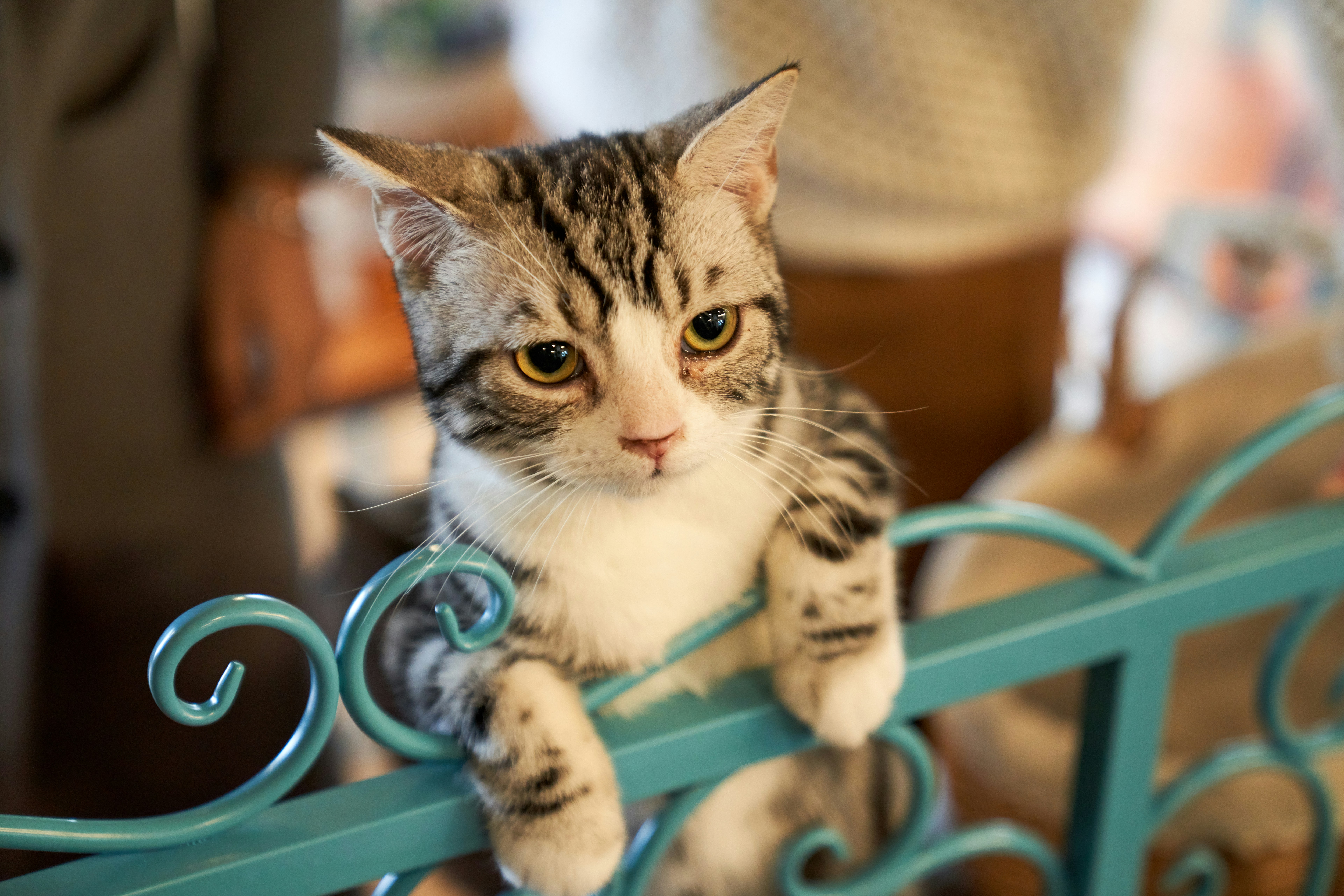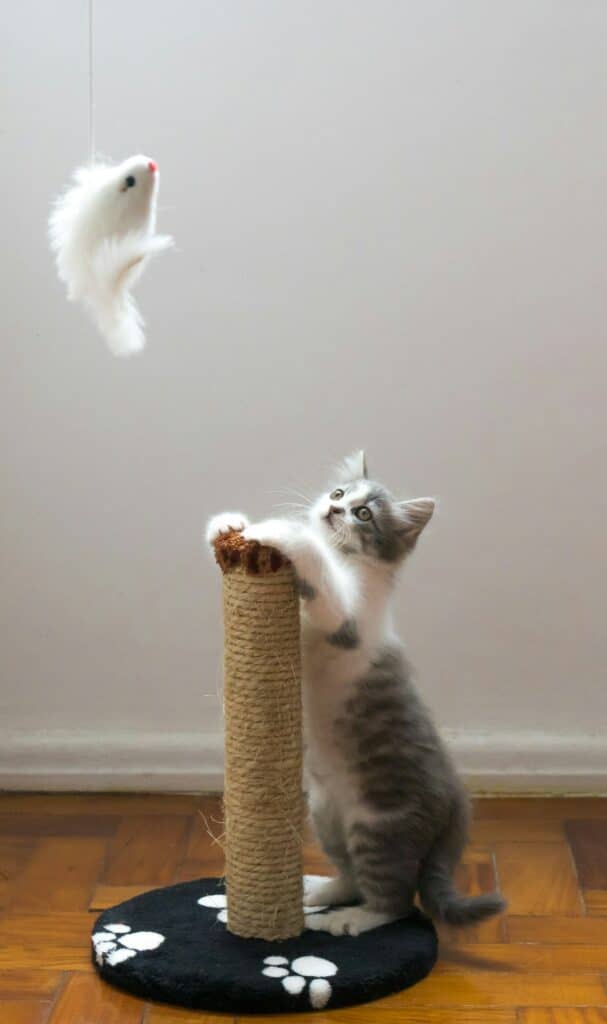
As a responsible cat owner, it’s essential to ensure your home is a safe space for your curious feline companion. Cats are naturally adventurous and love to explore, but this behavior can sometimes put them in harm’s way. That’s why it’s crucial to cat-proof your home, minimizing hazards while allowing your cat to enjoy a stimulating environment. This article will offer comprehensive advice on how to cat-proof your home, addressing common household dangers and providing tips to keep your cat safe and secure.
1. Why You Need to Cat-Proof Your Home
Cats are known for their agility, climbing, and curiosity, which can often lead them into precarious situations. Whether it’s jumping onto high surfaces or chewing on household items, these actions can result in accidents. Studies have shown that many feline injuries in the home are caused by falls and ingestion of harmful substances, highlighting the importance of creating a safe environment for your cat. According to Frontiers in Veterinary Science, everyday household items like toxic plants and foods can lead to serious health issues such as kidney failure and gastrointestinal problems in cats, making it essential to cat-proof your home.
2. Secure Windows and Balconies to Prevent Accidents
One of the biggest risks for cats, especially those living in high-rise apartments, is falling from windows or balconies. Cats love to perch on windowsills and explore new heights, but this can result in dangerous falls, often referred to as “high-rise syndrome.”
How to Cat-Proof Your Windows and Balconies:
- Install window screens or safety mesh to prevent your cat from falling or escaping.
- Consider adding a catio (an enclosed outdoor space) to your balcony, allowing your cat to safely enjoy the outdoors.
High-rise syndrome is a common issue, especially in urban environments. Cat-proofing your windows and balconies can greatly reduce the risk of injury, keeping your cat safe from dangerous falls.
3. Remove Toxic Plants and Foods
Many plants and foods that are harmless to humans can be toxic to cats. Studies, including one published in Frontiers in Veterinary Science, indicate that a significant number of feline poisoning cases result from accidental exposure to common household items like lilies, onions, and grapes, which can lead to severe health issues such as kidney failure and gastrointestinal problems.
Common Toxic Plants for Cats:
- Lilies
- Poinsettias
- Sago palms
Toxic Foods for Cats:
- Chocolate
- Grapes and raisins
- Onions and garlic
How to Cat-Proof Your Home from Toxins:
- Replace harmful plants with cat-safe alternatives like spider plants or bamboo.
- Store food in secure cabinets to prevent your cat from accidentally ingesting toxic items.
By removing dangerous plants and foods, you can cat-proof your home and prevent accidental poisoning, keeping your feline friend healthy.
4. Hide Electrical Cords and Small Objects Out of Reach
Cats love to chew on objects, including electrical cords, which poses the risk of electrocution. Small objects, such as rubber bands or hair ties, can also be hazardous if swallowed.
How to Cat-Proof Your Home from Electrical Hazards:
- Use cord protectors or hide cords behind furniture to keep them out of reach.
- Store small objects in closed containers to prevent accidental ingestion.
This step is crucial to cat-proof your home against the risk of electrocution or choking, which are common issues that cats face indoors.
5. Store Cleaning Products and Medications Properly
Many household cleaners and medications contain chemicals that can be extremely harmful to cats if ingested or inhaled. Even products with strong scents can irritate your cat’s sensitive respiratory system.
How to Cat-Proof Your Home from Chemical Hazards:
- Keep cleaning products and medications in locked cabinets or high shelves.
- Use pet-friendly cleaning products when possible, which are formulated to be less harmful to animals.
Storing these products securely is an important part of cat-proofing your home, protecting your pet from the risk of poisoning or respiratory issues.
6. Set Up a Safe Play Area to Keep Your Cat Entertained
Cats are active creatures that require mental and physical stimulation. A dedicated play area ensures that they can explore, jump, and play safely without damaging your home or hurting themselves.
How to Cat-Proof Your Home with a Safe Play Area:
- Invest in scratching posts, climbing trees, and interactive toys.
- Ensure the area is free from sharp objects or items that could be knocked over.
By providing a safe space for your cat to play, you’ll help them satisfy their natural instincts in a controlled, hazard-free environment.

7. Install Baby Gates for Restricted Areas to ensure a safe environment for your cat
Certain areas of your home, like the kitchen or laundry room, may contain hazards such as sharp objects, open flames, or harmful chemicals. Installing baby gates allows you to keep your cat away from these dangerous areas while still giving them freedom to roam elsewhere.
How to Use Baby Gates to Cat-Proof Your Home:
- Place baby gates at the entrances to the kitchen, laundry room, or any other area where your cat might encounter hazards.
Using gates is an easy and effective way to cat-proof your home and prevent your feline from accessing dangerous spaces.
8. Ensure Proper Identification in Case of Emergencies
Even with a well cat-proofed home, there’s always a small chance your cat might escape. In case they wander outside, proper identification is key to ensuring a safe return.
How to Cat-Proof Against Escapes:
- Have your cat microchipped and ensure they wear a collar with an ID tag.
Microchipping and visible identification increase the chances of your cat being returned safely if they accidentally leave your home.
9. Regular Vet Check-Ups and Pet Insurance
Cat-proofing your home is essential, but regular vet check-ups are equally important to keeping your feline healthy. Cats are experts at hiding illness, so routine visits to the vet can help catch any issues early.
How to Incorporate Vet Care into Cat-Proofing:
- Schedule annual vet visits for preventive care.
- Consider investing in pet insurance to cover unexpected medical costs. Check out our Article on pet insurance here!
Vet care is a critical part of ensuring your home remains a safe and nurturing environment for your cat.
Conclusion
Cat-proofing your home is essential for creating a safe environment for your feline friend. From securing windows and balconies to hiding electrical cords and toxic plants, each step plays a vital role in keeping your cat out of harm’s way. Taking the time to properly cat-proof your home will reduce the risk of accidents, ensuring that your cat can explore and enjoy their surroundings safely.
By following these tips, you can transform your home into a haven for your furry companion while giving yourself peace of mind. Remember, a well cat-proofed home means a happy, healthy, and safe cat!































